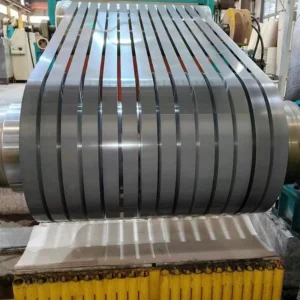Cold Rolled Electrical Steel: Key Material Driving Energy Efficiency in Modern Applications
In the quest for more efficient energy systems, cold rolled electrical steel has emerged as a critical material for power generation, distribution, and consumption. As industries and governments worldwide shift toward electrification and sustainable infrastructure, the demand for high-performance electrical materials is growing rapidly. Cold rolled electrical steel, with its unique magnetic properties and superior surface finish, is at the forefront of this technological evolution.
This article explores the fundamentals, production processes, applications, advantages, and global market outlook for cold rolled electrical steel, offering technical and strategic insights for professionals in power, automotive, and energy sectors.
What is Cold Rolled Electrical Steel?
Cold rolled electrical steel is a specialized silicon steel that undergoes cold rolling to enhance its surface quality, thickness precision, and magnetic performance. It is engineered specifically for electromagnetic applications and is divided into two main categories:
- Grain-Oriented Electrical Steel (GOES):
GOES is used in transformers and power systems. The grain orientation is optimized to align with the direction of magnetic flux, minimizing core loss and maximizing efficiency. - Non-Grain-Oriented Electrical Steel (NGOES):
This steel is isotropic in its magnetic properties, making it ideal for rotating machinery such as electric motors and generators. NGOES is widely used in industrial equipment, EVs, and household appliances.
Both types are cold rolled to precise thicknesses, ranging from 0.18 mm to 0.65 mm, depending on the application. The cold rolling process refines the steel’s crystal structure and ensures excellent flatness and tight dimensional tolerances.
The Manufacturing Process
The production of cold rolled electrical steel involves several sophisticated metallurgical and mechanical steps:
- Hot Rolling:
The process begins with hot rolled coils produced from slabs. These coils are then pickled to remove surface oxides. - Cold Rolling:
The material is reduced to its final thickness through cold rolling mills. This stage increases strength and improves the steel’s surface finish and dimensional control. - Annealing:
A decarburizing annealing process refines the grain structure and restores the steel’s ductility. This step is crucial for developing the magnetic properties of electrical steel. - Coating:
Most cold rolled electrical steel is coated with an insulating layer to reduce eddy current losses and enhance corrosion resistance. Common coatings include inorganic phosphate or organic resin. - Slitting and Cutting:
Finally, the steel is slit or cut to the required dimensions for use in laminations, stators, rotors, and transformer cores.
Strict quality control is applied throughout these stages to ensure consistency in magnetic loss, permeability, and mechanical performance.
Why Use Cold Rolled Electrical Steel?
Cold rolled electrical steel offers several advantages that make it indispensable in modern electrical engineering:
- Low Core Loss:
Reduced core loss improves the efficiency of transformers and motors, lowering electricity consumption and operating costs. - High Magnetic Permeability:
The material provides excellent magnetic induction at low field strength, enhancing the performance of energy-converting equipment. - Excellent Surface Insulation:
The surface coating helps reduce eddy currents and increases insulation resistance between layers in laminated cores. - Dimensional Accuracy:
Cold rolling ensures tight thickness tolerances and flatness, essential for precise lamination stacking and component assembly. - Environmental Compliance:
Cold rolled electrical steel is recyclable and aligns with global energy efficiency standards, including RoHS, REACH, and eco-design directives in Europe.
These properties contribute to lower emissions and higher energy savings, which are key goals in both industrial and consumer applications.
Applications in Key Sectors
Cold rolled electrical steel is vital to a wide range of energy-efficient technologies:
- Power Transformers:
GOES is used in distribution and power transformers due to its superior magnetic alignment and low core loss. It supports smart grid development and reduces transmission losses. - Motors and Generators:
NGOES is widely applied in motors for HVAC systems, washing machines, and pumps. In automotive applications, it plays a major role in electric vehicle motors, which demand low loss and high torque. - Renewable Energy:
Wind turbines, solar inverters, and hydroelectric generators benefit from cold rolled electrical steel’s performance and reliability under variable loads. - Railway and Transport:
High-speed rail systems and metro trains use electrical steel in traction motors, where consistent magnetic properties are essential for safety and speed control. - Industrial Equipment:
Compressors, fans, and other industrial motors utilize NGOES for their high efficiency and durability.
Cold Rolled Electrical Steel in the European and Middle Eastern Markets
The European Union has been a leader in adopting high-efficiency electrical products to meet its climate and energy goals. Regulations such as the Ecodesign Directive have pushed manufacturers to use materials that improve system performance. Cold rolled electrical steel plays a central role in meeting these stringent standards.
In the Middle East, energy diversification and infrastructure modernization are key priorities. The demand for cold rolled electrical steel is growing in response to:
- New power generation projects.
- Smart city development.
- Expanding EV infrastructure.
- Industrial automation and electrification.
Gulf countries such as Saudi Arabia and the UAE are investing heavily in renewable energy, creating significant demand for high-quality transformer and motor cores. Cold rolled electrical steel is essential for achieving operational efficiency and meeting performance expectations in harsh environments.
Innovation and the Future of Cold Rolled Electrical Steel
As electrical applications become more advanced, innovations in cold rolled electrical steel are emerging. These include:
- Ultra-Thin Grades:
Reducing thickness improves energy density in compact motors and transformers, especially in EVs and robotics. - High-Frequency Steel:
Designed for applications such as inverters and high-speed motors, where rapid switching and high magnetic field variations occur. - Domain Refinement Techniques:
Laser or mechanical domain refinement lowers magnetic loss further, pushing the limits of efficiency. - Environmentally Friendly Coatings:
New coatings improve insulation while reducing the use of heavy metals and volatile compounds.
These advances will ensure that cold rolled electrical steel continues to support global energy transformation, electrification, and digitalization in the decades ahead.
Conclusion
Cold rolled electrical steel is far more than just a processed material—it is the backbone of energy efficiency across a wide range of sectors. From transformers and EV motors to wind turbines and smart grid technologies, it empowers a sustainable future.
With rising demand in Europe and the Middle East, businesses must understand the capabilities, applications, and trends shaping this industry. Investing in high-quality cold rolled electrical steel is not just a technical decision—it’s a strategic move toward energy resilience, compliance, and global competitiveness.




